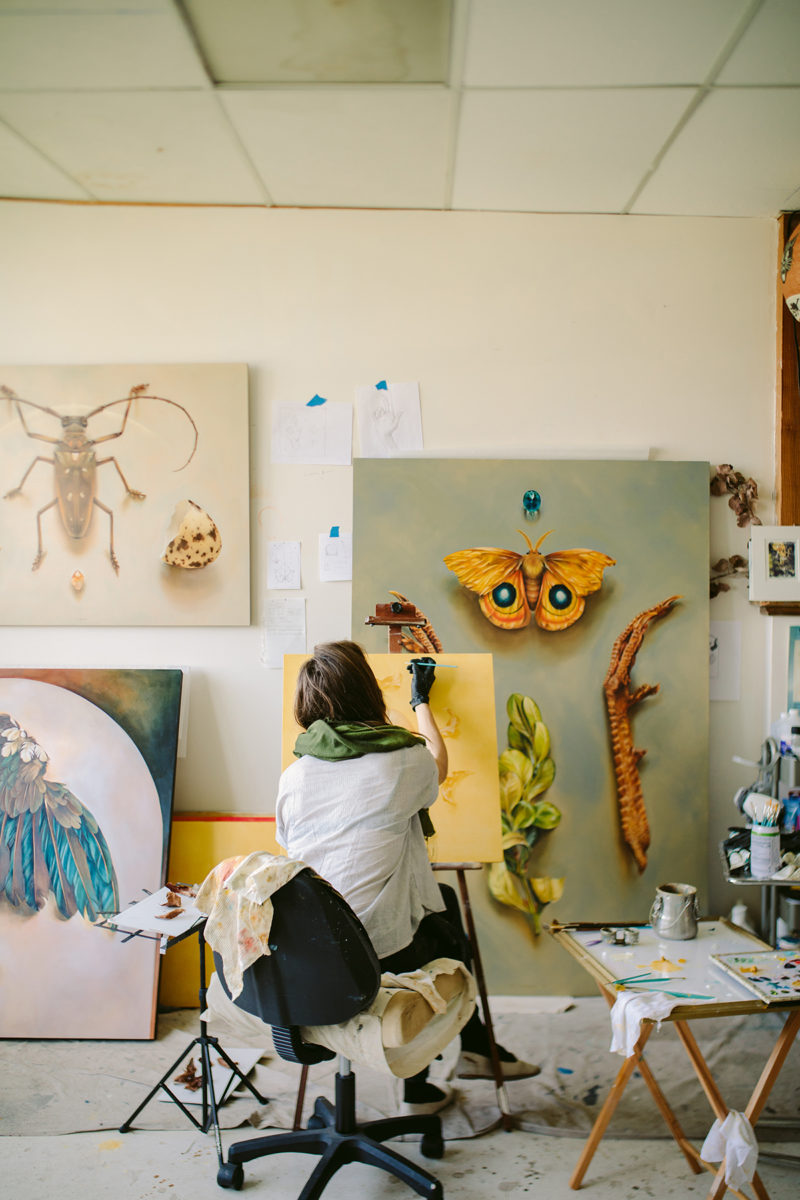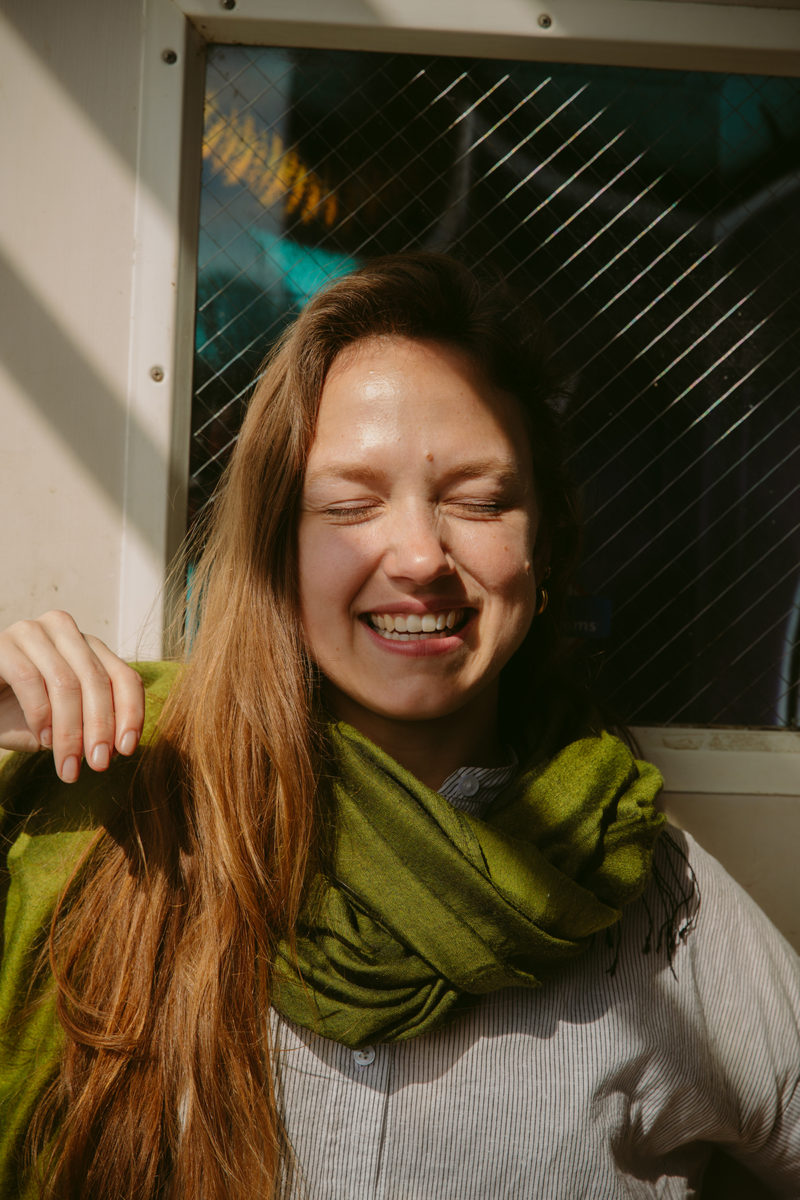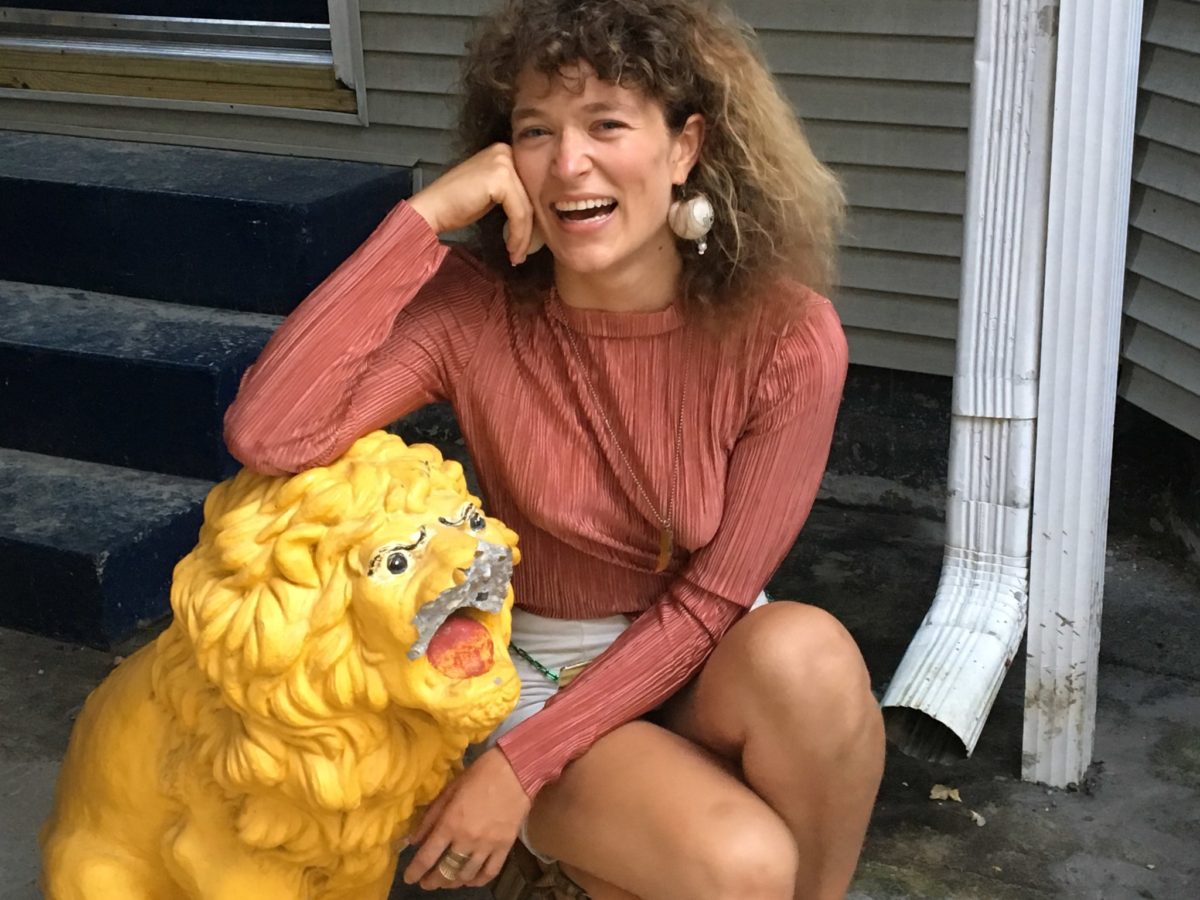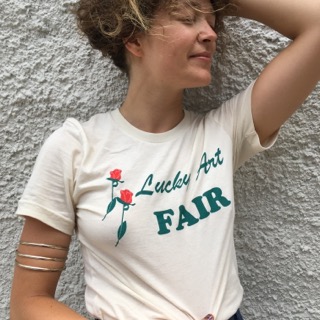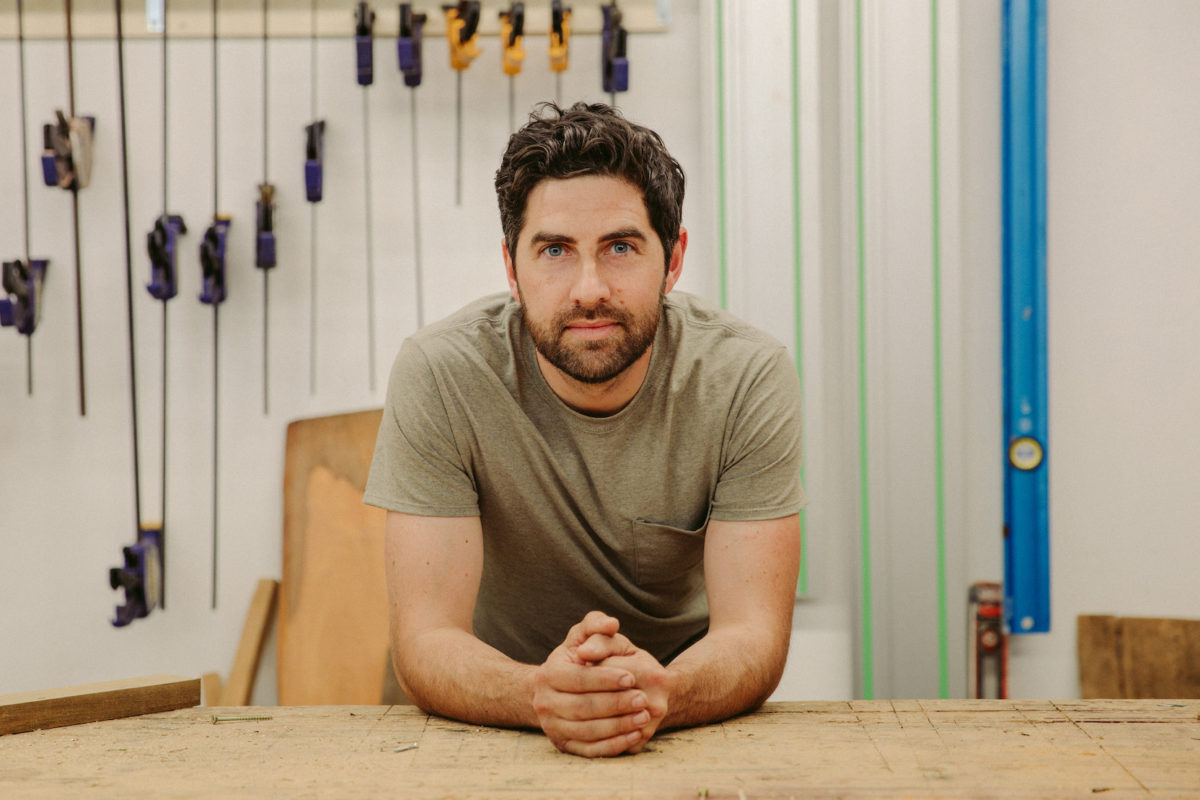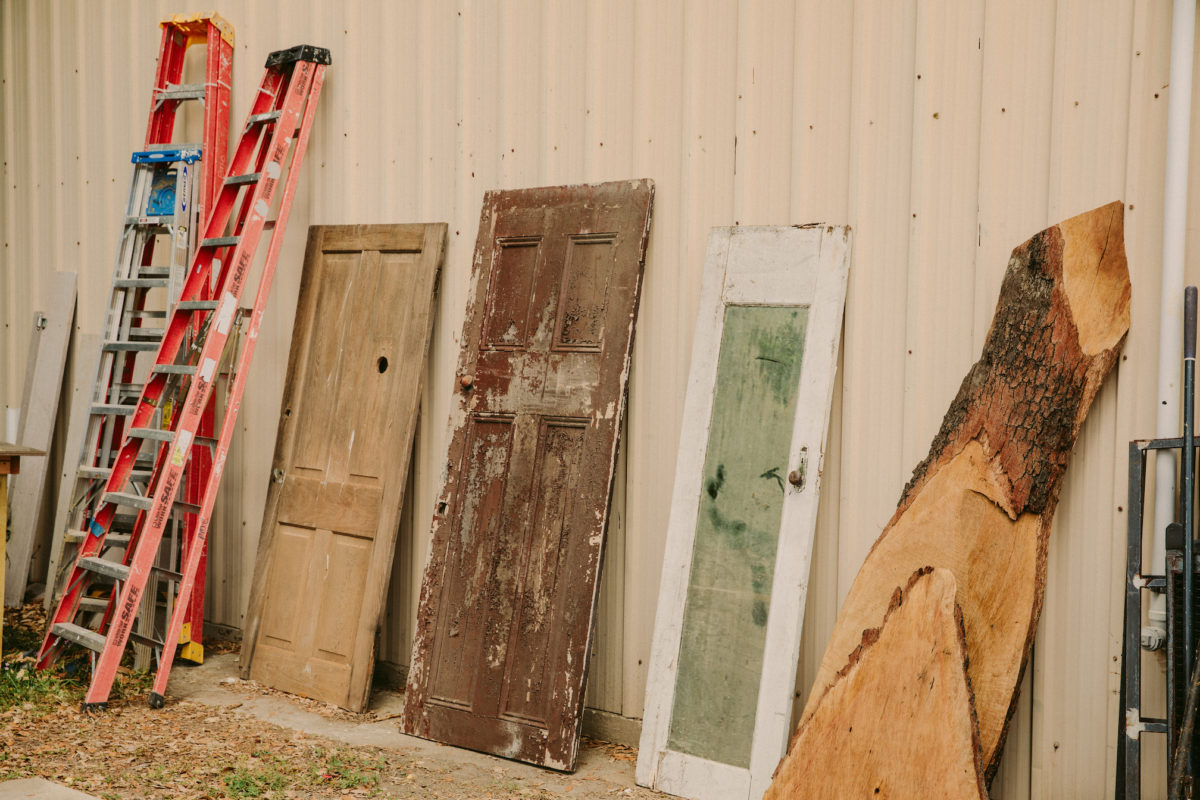New Orleans attracts visual artists of all different mediums, from graffiti to screenprinting, painting, woodworking, and sculpture. But the thing they all have in common is their ability to find continuous inspiration from the city they live in.
“The aesthetic of my work is definitely shaped by the city,” says painter Ida Floreak. “Lushness and decay and how those two things play in tandem with each other is a large feature in my work.”
There are plenty of visual reasons to be inspired by The Big Easy: The ironwork in the French Quarter, the Mardi Gras parade costumes, the street musicians. But the artists here are also inspired by the less aesthetic, more complicated aspects of New Orleans. Everyone—artist or not—pointed to Hurricane Katrina, 15 years after the storm, as a defining factor in their work, life, and the fabric of the city. But that’s not the only tragedy that has seeped into the present from the city’s dark past.
“Even before Katrina, there has been a narrative of bad and a narrative of pain,” says the artist Brandan Odums, who goes by BMike. “You can go all the way back to when the French Quarter was one of the biggest auction areas of black bodies and think about how that was happening at the same time as incredible genius through music. So there’s always been this balance of ugliness and beauty or survival and defeat. I think that dynamic in this city has always been such an interesting glue.”
Below, meet several New Orleans artists whose works nourish the soul of a community still in need of healing.
BMike
Brandon “BMike” Odums graduated from the New Orleans Center for Creative Arts (NOCCA) and has since become one of the city’s most well-known artists, collaborating with everyone from Ava Duvernay to Nike, Colin Kaepernick, and the New Orleans Boys & Girls Club.
BMike was particularly reenergized by Hurricane Katrina, turning his content and events company 2 Cents Entertainment—which had focused primarily on music video work—to documenting and analyzing the changing sociopolitical landscape of New Orleans. “We felt the mainstream media wasn’t really reflecting what we saw and what we knew was happening. And so I think the creative community helped, as it always has,” he says. “The best of what we are has always been represented by the way the culture has been able to transform the negative into positive.”
Now, BMike works mostly in graffiti, which is on display at Studio Be, a 36,000 square foot space in the city’s Bywater neighborhood. The studio is filled with installations such as one half of a basketball court emblazoned with the words “The ball should bounce the same for everyone” and “1/3 black males will go to prison in their lifetime. 3/10,000 will go to the NBA” that have been spray-painted onto surrounding walls and panels. Open four days a week, it’s a must-visit on any NOLA itinerary.
Erik Kiesewetter
Erik Kiesewetter started his printing and design company, called constance, in the immediate months following Hurricane Katrina; the graphic designer put up flyers around town as an open call for visual artists and writers to contribute responses to the storm. The result was a 1,000-book run of a literary arts journal that gave voice to those affected by Katrina and its aftermath. From there, Kiesewetter started a website for arts criticism, an art market, and a blog showcasing different artists and writers—all “to kind of help push everyone because there wasn’t a lot of money floating around,” he says. “We tried a number of things to get things going.”
He published the second edition of his book in 2008 when New Orleans was in a “weird in-between-haircuts stage,” he says. “It was the feeling of dystopian despair.” Now, he focuses on risograph printing and design, for clients including musicians, universities, and museums.
Ida Floreak
Painter Ida Floreak was a transplant who moved to New Orleans following Katrina in 2011. Her work presents objects found in the natural world (an egg, a cicada, feathers) as religious deities, combining surrealism and science to dramatic, anthropological effect. “The aesthetic of my work is definitely shaped by the city,” says Floreak. “I don’t tend to touch the political corruption and economic issues in my work as much, but they are all tied together in a way that you can’t ignore.”
In New Orleans, there’s not much of an art market, nor is there much state funding; but for Floreak, creating art without worrying about selling it is paramount to her success as an artist. “There are things about the fabric of the city that makes art possible in a way that it’s not in other places that are commerce-driven,” says Floreak. “There’s not a judgement around not having it together. In other places, there’s a striving to look like you’re doing well that can be pretty damaging. In social gatherings if you’re like, ‘I am broke, I can’t afford a three-dollar PBR right now,’ no one is going to judge you—which is crucial for creative freedom. Because if you’re striving to make money you’re not going to make good, honest work.”
DNO
DNO, originally Defend New Orleans, was founded by New Orleans natives in 2003, as a screen-printing and t-shirt business. Defend New Orleans was initially a campaign meant to “stop New Orleans from becoming like anywhere else. It was just this abstract cultural statement,” the founders tell me from the backyard of their namesake store on First Street. Following Katrina, the whole ethos of DNO changed. “When we got back it was like, ‘This could all be gone.’ When it comes to people who lived here pre-Katrina, defending New Orleans has this face of ‘We almost lost it, and we really worked hard to get it back.’” All of the money made immediately following Katrina went to rebuilding efforts, and now the company contributes to organizations including BreakOUT!, which supports LGBTQ youth in NOLA, and the Musician and Culture Coalition of New Orleans, as well as highlights local artists and “people who are doing good things in town” on their company blog—like Hurray for the Riff Raff’s Alynda Segarra.
Now, DNO is constantly releasing new styles with taglines such as “I love you Louisiana,” “Slow down loosen up,” and, of course, “Defend New Orleans.” They’ve expanded to a second store on Magazine Street and ship internationally.
Rosalie Smith
As an installation artist, Rosalie Smith says that her work isn’t “marketable”—but that doesn’t mean she shouldn’t be able to make a living off of her art. So she started Lucky Art Fair. “My whole intention was to design a financial model that allowed for artists who don’t make financially marketable work to get paid,” she says.
The inaugural fair took place in June and paid each participating artist a percentage of the overall fair profits. “It’s a little bit of a socialist financial structure, but it’s based on the belief that all art is equally valid and worth being paid for,” says Smith. The tagline from the fair is “radical equity in opportunity and income.” Smith, along with her co-founders Regina Parkinson and Taylor Balkissoon, put out an open call for artists and prioritized those that they had never heard of before, making sure to include artists of color and artists that are born and raised New Orleanian.
In her own work, Smith works with found materials to create pieces that speak to “the temporality of life,” including work that uses synthetic flowers collected from drainage channels of New Orleans cemeteries after Mardi Gras parades. “The artificial flowers struck me as so poignant and beautiful because it’s a gesture of love that will last forever,” she says. She points out, ironically, that the synthetic materials they’re made of also perpetuate wild weather patterns that fuel storms like Katrina. “So they’re beautiful, but they’re mournful and sad in a way too. And there’s something about life here that’s sort of about that as well.”
Matthew Holdren
As a child, Matthew Holdren watched his dad build their family home in Vermont and grew up going to his mom’s antique store. “I’ve always dabbled in art and painting and sculpture,” he says. He started building his own furniture “just to furnish my own apartment,” and then a friend suggested he put a bookshelf up for sale on Etsy. When the clothing company DNO asked him to build out their store, his career was jumpstarted, and he eventually founded Matthew Holdren Design. He’s since created custom furniture and spaces all around the city, including for The Elysian Bar inside the Hotel Peter & Paul, Claret Wine and Cocktail Bar, Satsuma, and CellarDoor. Holdren uses reclaimed wood from old houses and logs from cypress trees that have been pulled from the swamps surrounding New Orleans, making his connection to the city he now calls home a material one as well as an emotional one.
“I just wanted a change of pace and change of scenery,” he says of how he landed in the South. Holdren was traveling around the U.S. and ended up at a friend of a friend’s in New Orleans. He never left. “I’m a transplant, but when I arrived it really felt like it was locals, Louisiana-born, and/or people who had lived in New Orleans for 20-plus years,” he says. “Everyone was coming out of Katrina and they all had their experiences—in some cases, they were able to be inspired by [the storm] and get some drive out of it. Everyone’s processing of that whole time was a big factor in [the artistic] community and what I’ve seen in the past 12 years.”

